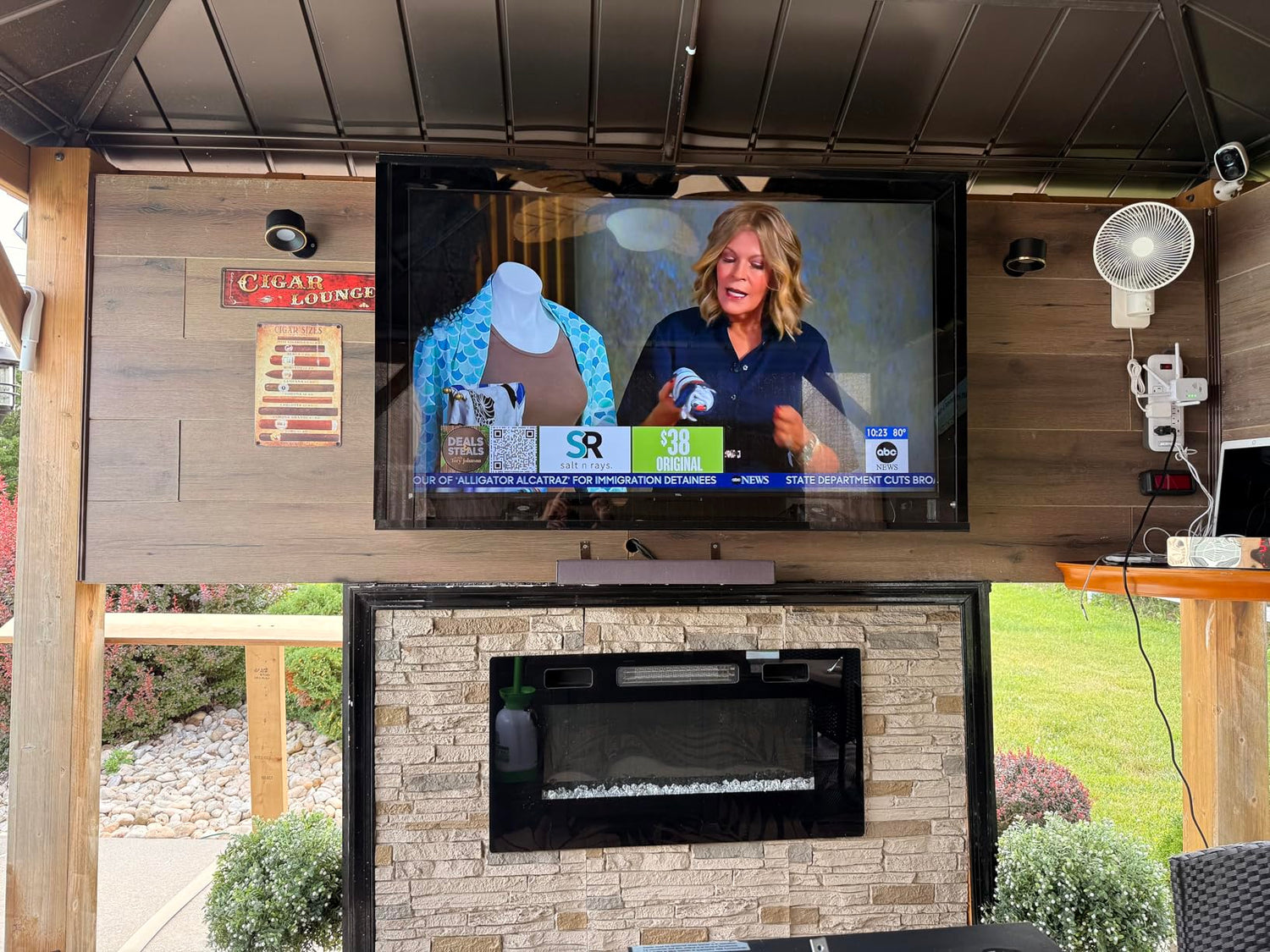
Outdoor TV Enclosure vs. Cover: Which is the Right Choice for Your Patio?
When taking your entertainment outdoors, protecting your television from the elements is paramount. The two most common solutions are an outdoor TV enclosure and an outdoor TV cover. While both offer a degree of protection, they cater to different needs, budgets, and levels of convenience.
The Tale of Two Protections: A Head-to-Head Comparison
The Deep Dive: Understanding the Nuances
Outdoor TV Enclosures: The Fortress for Your Flat Screen
An outdoor TV enclosure is a hard-shell case that permanently houses your television. Think of it as a mini-safe for your screen.
Pros:
-
Superior Protection: Enclosures are built to withstand the harshest weather conditions, from driving rain to heavy snow. Their sealed design also keeps out dust, insects, and humidity, which can be detrimental to electronic components. Many models are also impact-resistant, protecting the screen from accidental bumps.
-
Theft Deterrence: The lockable nature of most enclosures provides a significant deterrent to theft, offering peace of mind when the TV is left unattended.
-
Convenience of Use: The most significant advantage is the ability to watch TV without removing any protective layer. The front panel is typically made of a clear, anti-glare material that allows for viewing in various lighting conditions.
-
Enhanced Longevity for Your TV: By creating a controlled environment, an enclosure can significantly extend the life of a standard indoor television used outdoors.
Cons:
-
Cost: The robust protection comes at a price. Enclosures are a more substantial financial commitment than covers.
-
Installation: Setting up an enclosure is a more involved process that requires tools and some DIY skills. It needs to be securely mounted to a solid surface.
-
Bulkiness: Enclosures add size and weight to your TV setup, which might not be ideal for all outdoor aesthetics.
-
Potential for Overheating: While many enclosures have ventilation systems, in very hot climates, there is a risk of the TV overheating if the ventilation is inadequate.
Best for: Homeowners in areas with extreme weather conditions, those who leave their TV outdoors year-round, and anyone concerned about theft or physical damage. It's also the ideal choice for those who want the convenience of watching their outdoor TV at a moment's notice.
Outdoor TV Covers: The Simple, Practical Shield
An outdoor TV cover is a fabric sleeve that you slip over your television when it's not in use. It's a straightforward and budget-friendly solution.
Pros:
-
Affordability: Covers are a fraction of the cost of enclosures, making them an accessible option for most budgets.
-
Ease of Use: They are incredibly simple to put on and take off, requiring no installation.
-
Protection from the Basics: A good quality cover will effectively shield your TV from dust, pollen, and morning dew. Many are made from water-resistant materials that can handle a light drizzle.
-
Discreet Profile: When the TV is covered, it's less of a focal point in your outdoor living area.
Cons:
-
Limited Protection: Covers offer minimal protection against heavy rain, snow, extreme temperatures, or humidity. They also provide no security against theft or impact.
-
Inconvenience: You must remove the cover every time you want to watch TV and replace it when you're finished.
-
Durability Concerns: The lifespan of a cover depends on the quality of the material and its exposure to the sun and elements. Cheaper covers may degrade and tear over time.
Best for: Individuals in mild climates with a covered or semi-protected outdoor space, such as a screened-in porch or a patio with a substantial overhang. It's also a good option for those who only bring their TV outside for specific occasions and are looking for a simple way to keep it clean between viewings.
The Verdict: Tailoring the Choice to Your Needs
Ultimately, the decision between an outdoor TV enclosure and a cover boils down to a few key factors:
-
Your Climate: If you experience frequent rain, snow, or high humidity, an enclosure is the safer and more reliable option. For those in drier, more temperate zones, a cover may suffice.
-
Your Budget: Enclosures are a significant upfront investment, while covers are much more affordable.
-
Your Desire for Convenience: If the idea of removing and replacing a cover every time you want to watch TV seems tedious, the "always-ready" nature of an enclosure will be a major selling point.
-
Your Security Concerns: For those worried about theft, a lockable enclosure is the only viable choice.
By carefully considering these factors, you can confidently choose the right protective solution for your outdoor television and enjoy countless hours of open-air entertainment.
